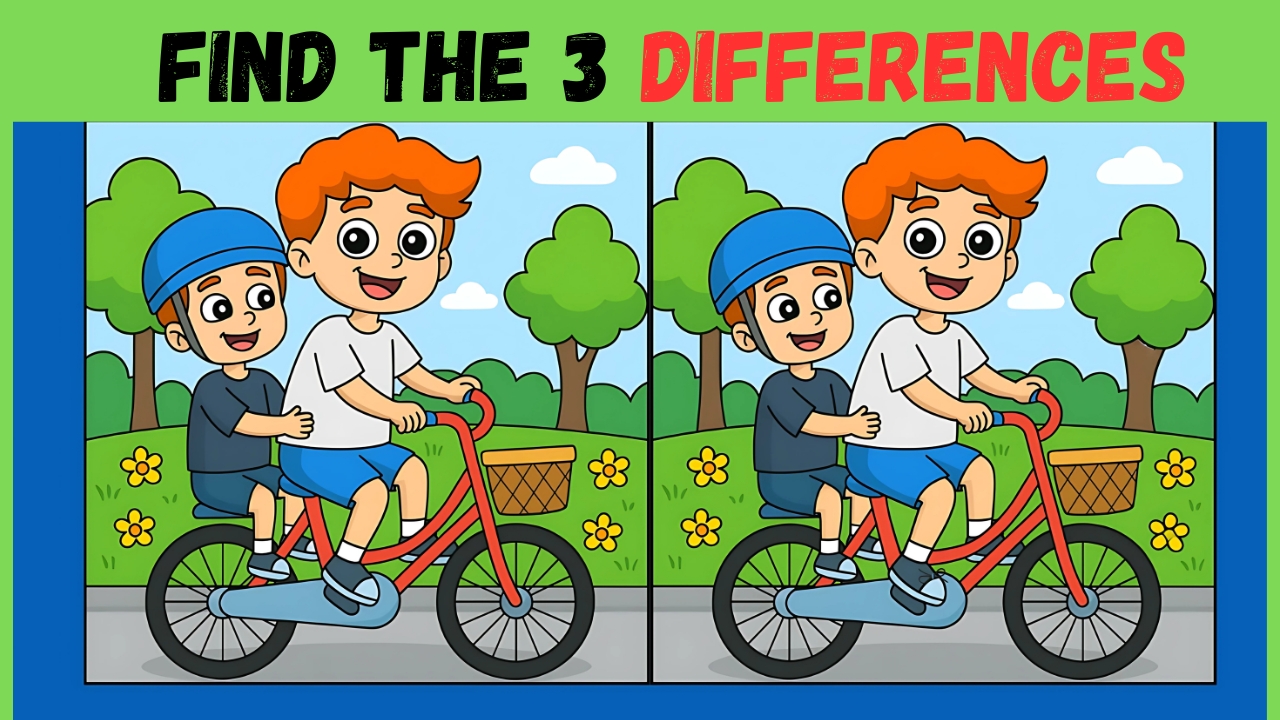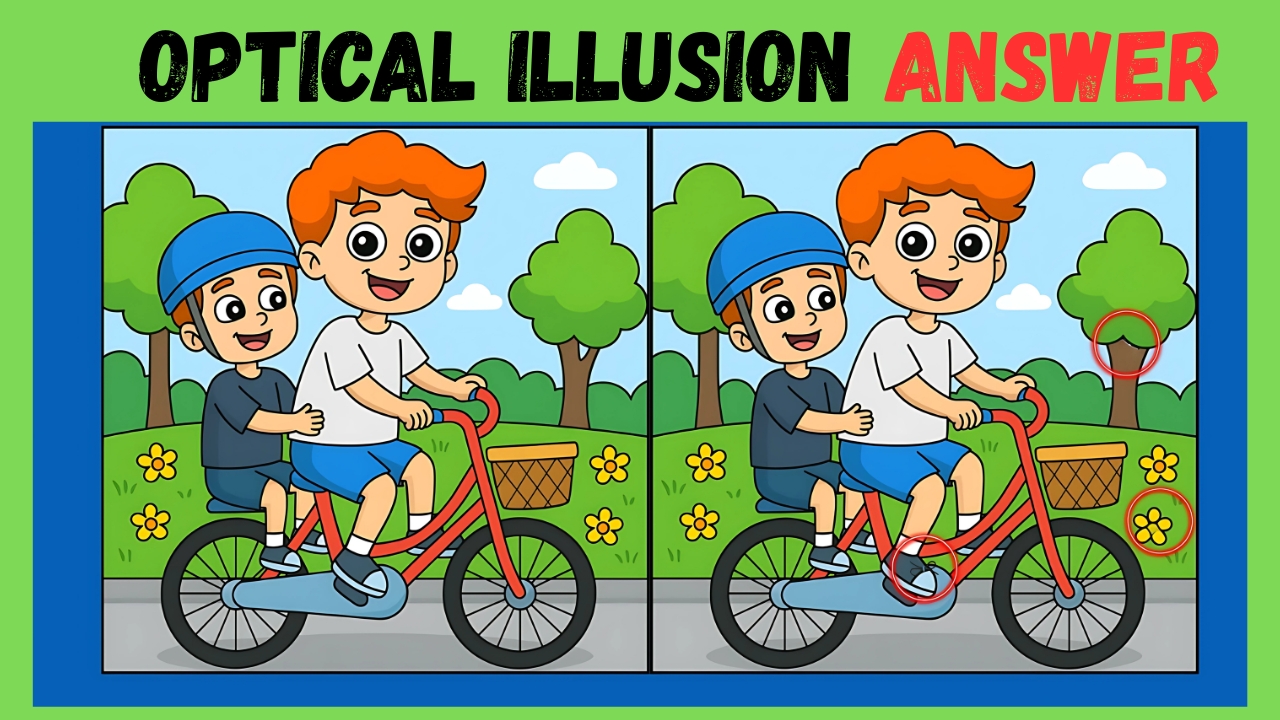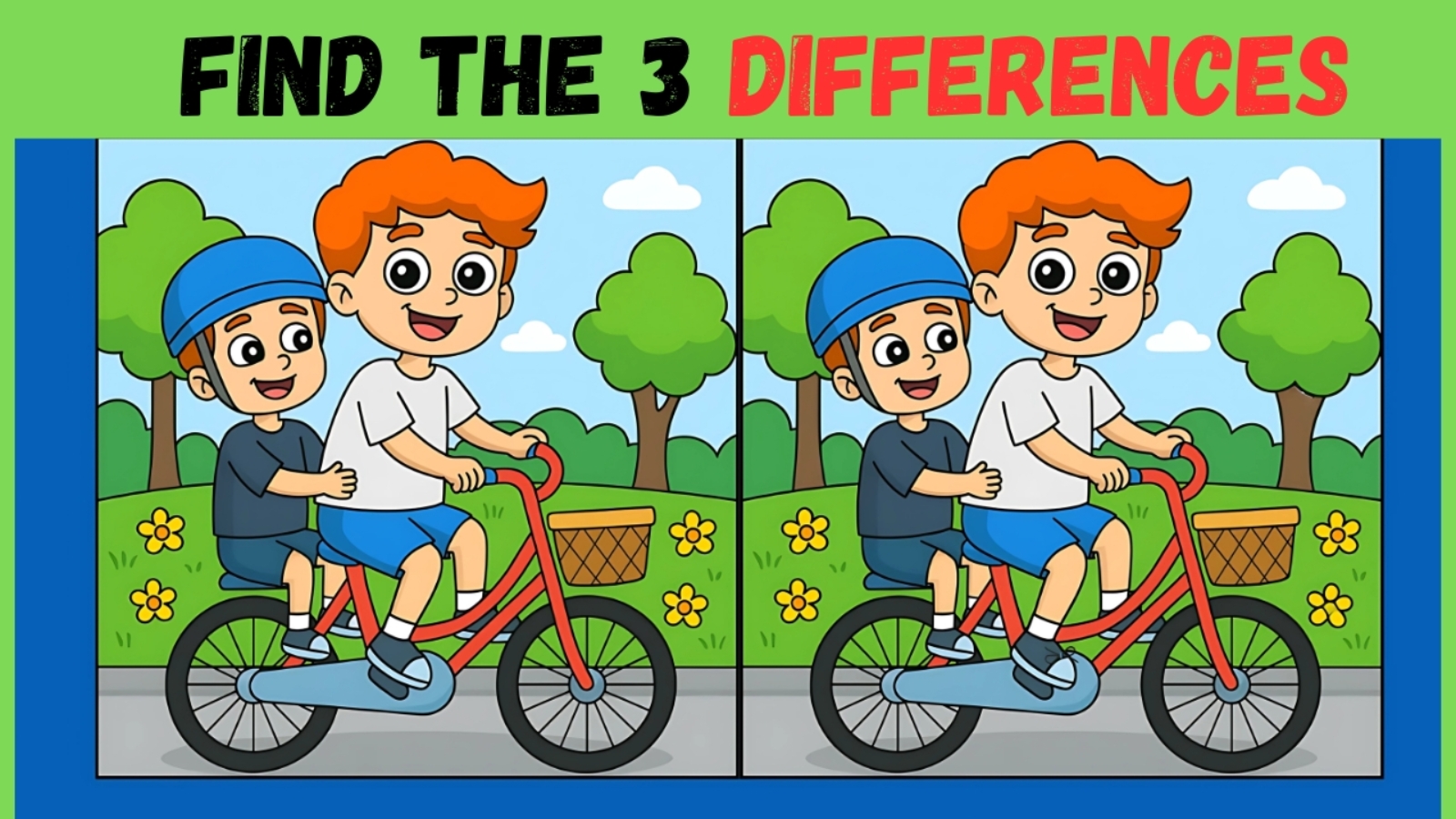Picture this: you’re taking a quick break when you stumble upon an adorable image of a father and son enjoying a peaceful bike ride together. The scene radiates warmth and joy, but there’s more than meets the eye. Hidden within this charming family moment are three subtle differences that challenge even the sharpest observers.
This isn’t your typical time-waster. This particular visual puzzle has become a favorite among families because it combines the universal appeal of heartwarming moments with the thrill of discovery. The catch? You only have nine seconds to spot all three changes.
Why Visual Puzzles Captivate Us
There’s something irresistible about challenges that test our observation skills. These puzzles tap into our innate curiosity and competitive spirit, making us feel like visual detectives solving an intriguing mystery. When you look at the dad and son bike scene, your brain immediately senses something isn’t quite right, triggering an almost magnetic pull to investigate further.
The genius of this particular challenge lies in its perfect balance. The image appears deceptively simple at first glance—just a happy father pedaling alongside his child through a pleasant outdoor setting. Yet your mind knows there are secrets hiding in plain sight, waiting to be discovered.
Optical Illusion Test: Find 3 Differences in the Father-Son Pic

How Your Brain Tackles Visual Challenges
The Scanning Process
When you engage with this type of puzzle, your brain shifts into high-performance mode. Your eyes don’t wander aimlessly; instead, they systematically scan both images, comparing every detail with remarkable precision. This process activates multiple brain regions simultaneously, creating a powerful cognitive workout.
Strategic Difference Placement
The creators of this dad and son puzzle demonstrate real craftsmanship in how they’ve distributed the three differences. Rather than clustering them in one area, they’ve strategically placed each change in different sections of the image:
| Location Type | Specific Details |
|---|---|
| Background scenery | Tree trunk shape variation |
| Character details | Missing shoelace on boy’s footwear |
| Decorative elements | Flower petal difference near front wheel |
| Focal areas | Middle action zone and periphery balance |
| Visual difficulty | Subtle changes requiring close inspection |
| Search zones | Upper background, lower foreground, central focus |
The Magic of Nine Seconds
The time constraint isn’t arbitrary—it’s carefully calculated to create the perfect challenge level. Nine seconds provides just enough time for your brain to conduct a thorough scan while preventing overthinking that can actually hinder performance. This sweet spot encourages you to trust your instincts and rely on your natural pattern recognition abilities.
During this brief window, your brain prioritizes the most obvious differences first, exactly as the puzzle designers intended. Some changes will practically leap out at you, while others require that extra moment of focused attention that makes victory so satisfying.
Building Your Observation Skills
Success with these visual challenges improves with practice and strategy. Rather than letting your eyes roam randomly, develop a systematic approach:
Start with the obvious focal points – the dad and son themselves Move to background elements – trees, flowers, and scenic details
Check edges and boundaries – where differences often hide Look for missing or added elements – sometimes it’s what’s not there
The Social Power of Puzzle Sharing
One delightful aspect of challenges like this dad and son bike puzzle is how they bring people together. These images spread across social media platforms, creating friendly competitions among friends and family members. There’s genuine joy in being the first to spot all three differences or helping someone else finally see that elusive change they’ve been missing.
Parents particularly appreciate these puzzles because they provide screen time that feels both entertaining and educational. Unlike passive entertainment, spot-the-difference games require active engagement, encouraging children to develop patience, focus, and analytical thinking skills.
Real-World Benefits
Regular engagement with visual puzzles offers cognitive advantages that extend far beyond entertainment:
Enhanced attention to detail – useful in work and daily tasks Improved visual processing – helps with reading and navigation
Better pattern recognition – aids in problem-solving situations Increased patience and focus – valuable in our distraction-filled world
Beyond the Challenge
Whether you conquered this puzzle in record time or you’re still searching for that third difference, remember that the real value lies in the process itself. Each attempt strengthens your visual processing abilities and trains your brain to notice subtle details more effectively.
The next time you encounter a spot-the-difference challenge, embrace both the excitement and the occasional frustration. These moments of concentrated focus provide a welcome respite from constant digital stimulation, offering a chance to slow down and truly observe what’s in front of you.
This charming dad and son bike scene represents more than just a puzzle—it’s a celebration of family bonds and the joy of shared discovery. So take another look, trust your instincts, and enjoy the hunt for those three cleverly hidden differences.
Optical Illusion Answer

Frequently Asked Questions
Q: How long should I spend looking for the differences?
A: The challenge suggests 9 seconds, but take your time to enjoy the process and improve your skills.
Q: Are these puzzles good for children?
A: Absolutely! They help develop focus, patience, and visual processing skills in a fun way.
Q: What if I can’t find all three differences?
A: Don’t worry—practice makes perfect, and even attempting the challenge provides cognitive benefits.
